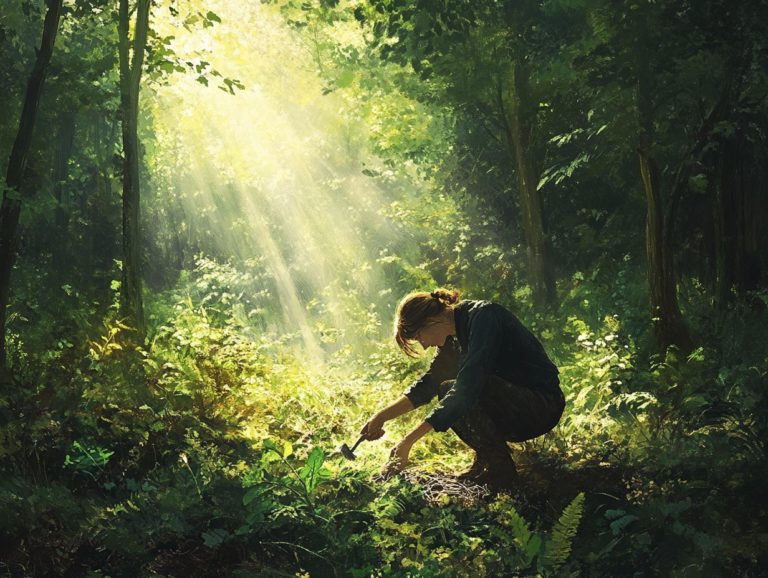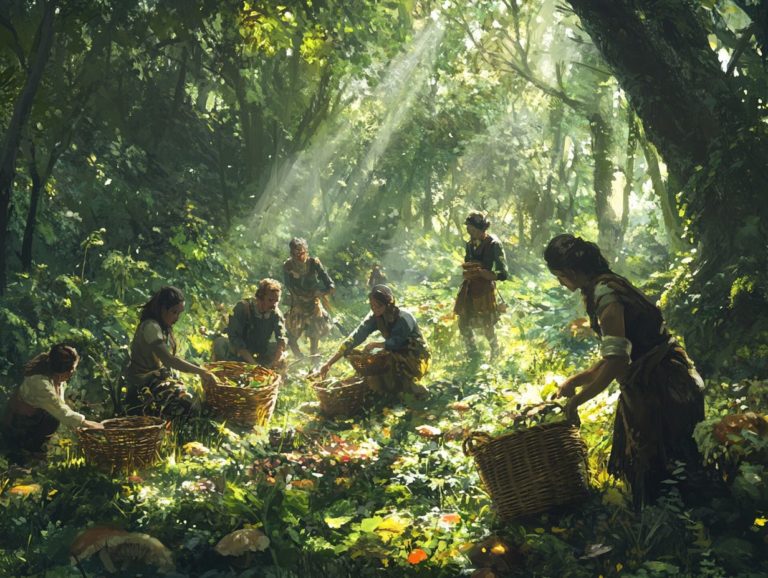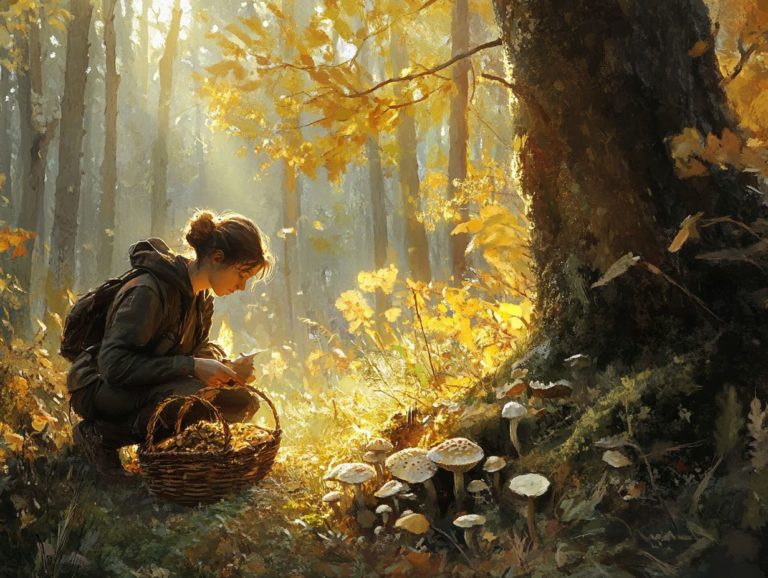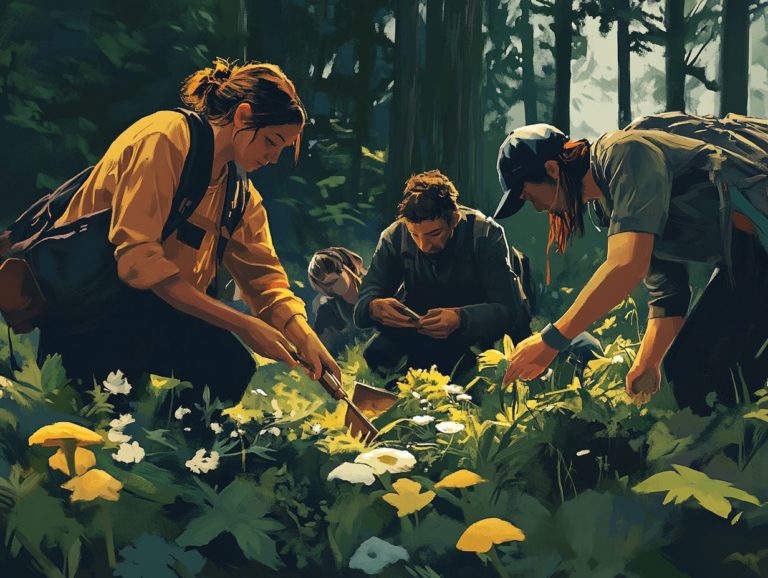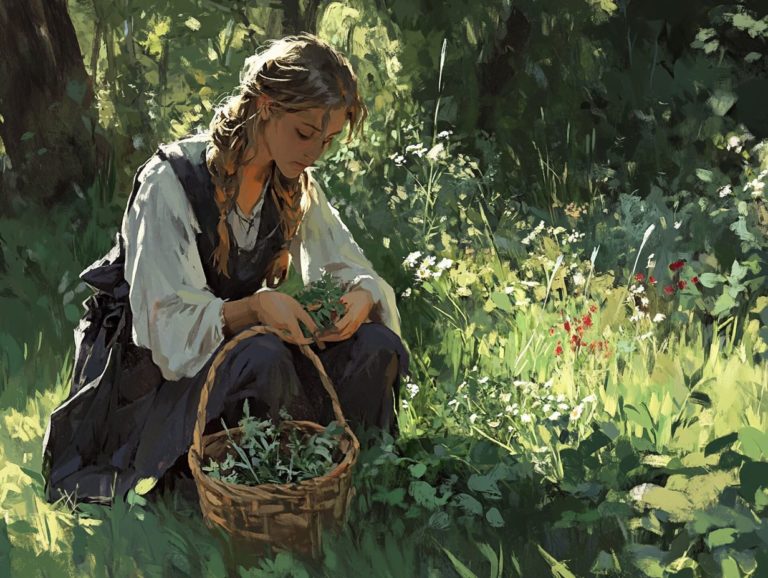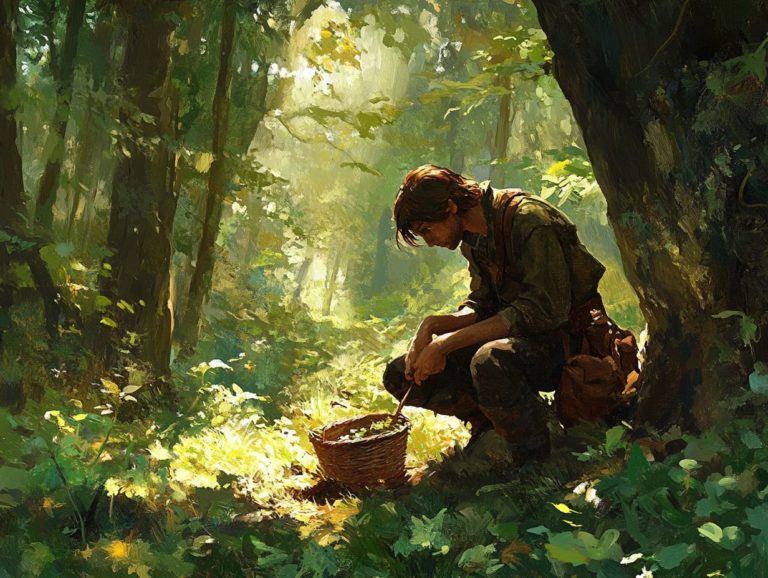The Connection Between Culture and Foraging Techniques
Foraging is more than just collecting food; it is intricately woven into the fabric of culture, tradition, and identity.
This exploration invites you to discover how cultural beliefs influence foraging practices. You will learn about the time-honored techniques of indigenous peoples and contemporary adaptations in an ever-evolving landscape.
You will delve into the diverse methods used across various cultures. This includes uncovering the profound impact of cultural heritage on foraging behavior and recognizing the critical importance of sustainable practices in preserving both ecosystems and cultural legacies.
Join us and discover the exciting connection between culture and foraging!
Contents
- Key Takeaways:
- The Role of Culture in Foraging
- Traditional Foraging Techniques
- Modern Foraging Techniques
- The Influence of Culture on Foraging Behavior
- Foraging in Different Cultures
- The Future of Foraging and Cultural Preservation
- Frequently Asked Questions
- What is the connection between culture and foraging techniques?
- How does culture impact foraging techniques?
- What role does knowledge play in foraging techniques?
- Are foraging techniques the same in all cultures?
- How has modernization affected foraging techniques?
- Why is understanding the connection between culture and foraging techniques important?
Key Takeaways:
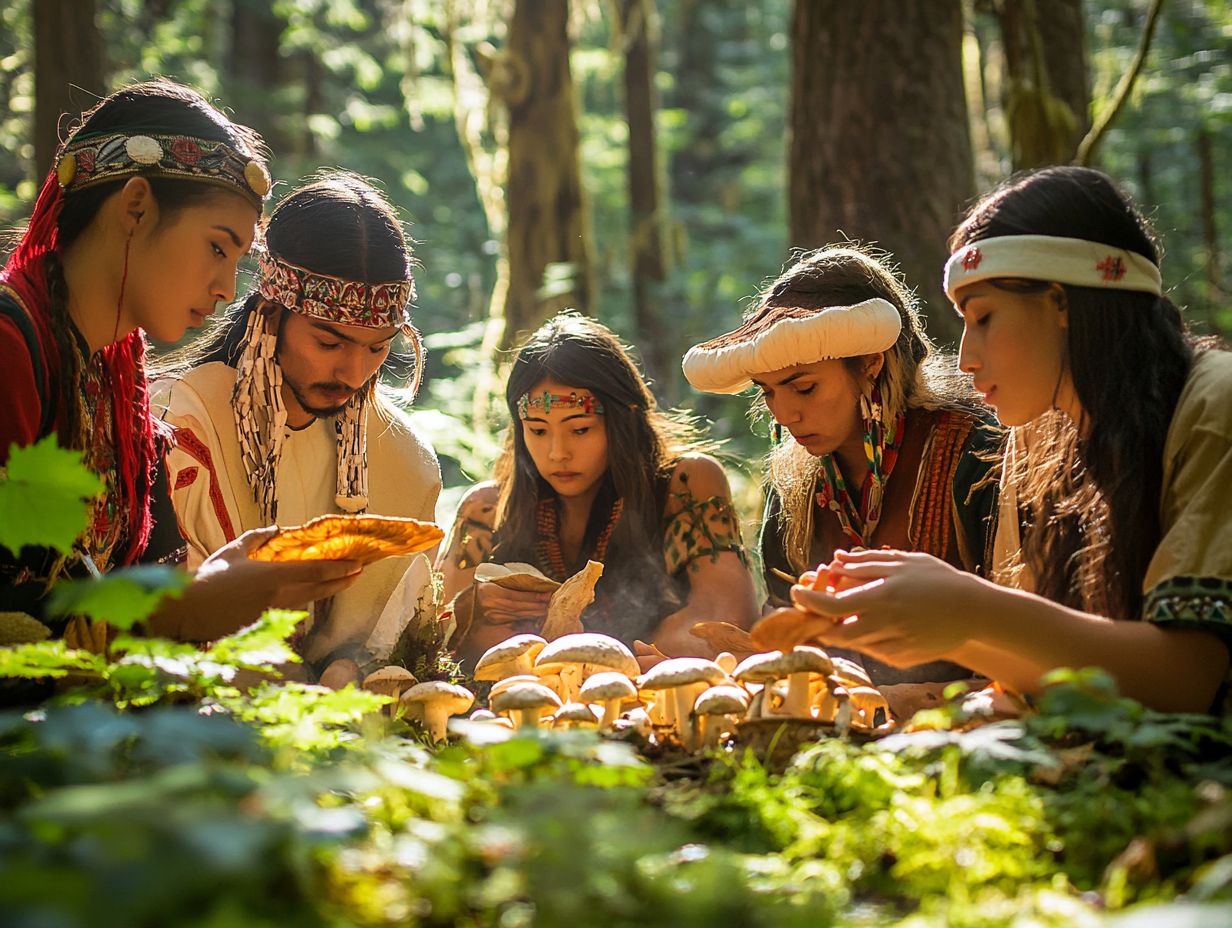
- Culture shapes foraging techniques, influenced by beliefs.
- Indigenous cultures have unique, effective methods passed down through generations.
- Sustainable practices protect both traditions and our environment.
The Role of Culture in Foraging
The role of culture in foraging is remarkably profound. It influences not just the behaviors of animals like chimpanzees, elephants, and whales, but also shapes the intricate social structures within these species. This dynamic leads to unique foraging techniques and food preferences that are handed down through generations.
You can observe how this cultural evolution manifests in the ways these animals communicate, learn, and share knowledge about their environments. Ultimately, this impacts their food bonding and resource management strategies.
What is Culture? Its Power in Foraging
Culture is essentially a tapestry of learned behaviors that shape interactions within a community. It profoundly influences the foraging strategies employed by various species.
In the animal kingdom, these culturally transmitted behaviors are essential for survival. They dictate how individuals locate and utilize food sources. Take primates and birds, for instance; they rely heavily on social learning. Younger members watch and mimic the techniques of their elders, leading to a fascinating variety of foraging practices across different groups.
Communication is the lifeblood of this process. Vocalizations and body language convey crucial information about food availability and potential threats. This vibrant exchange within animal communities enhances foraging efficiency and deepens their understanding of the environment. It beautifully illustrates the intricate interplay between culture and survival tactics.
Traditional Foraging Techniques
Traditional foraging techniques connect you to your environment, passed down through generations.
These practices often involve gathering edible plants with recognized medicinal benefits, such as mugwort and lotus. Embracing this knowledge connects you to local heritage and enriches your understanding of nature’s bounty.
Methods Used by Indigenous Cultures
Indigenous cultures have developed unique foraging methods, highlighting the role of foraging techniques in sustainability. These techniques showcase a profound understanding of local ecosystems and their cultural heritage.
These methods often use seasonal harvesting that aligns with the life cycles of plants and animals, ensuring sustainability and abundance for generations to come. The traditional knowledge, meticulously passed down through ages, includes identifying edible species and applying specific tools and techniques. For instance, using controlled burns encourages the growth of desirable plants, showcasing a sophisticated approach to land management.
The wisdom embedded in these practices reflects a deep relationship between communities and their environments. It fosters a sense of stewardship and respect for the variety of life that continues to shape cultural identity and daily life.
Discover how these practices foster a deep connection with nature and nurture cultural identities.
Modern Foraging Techniques
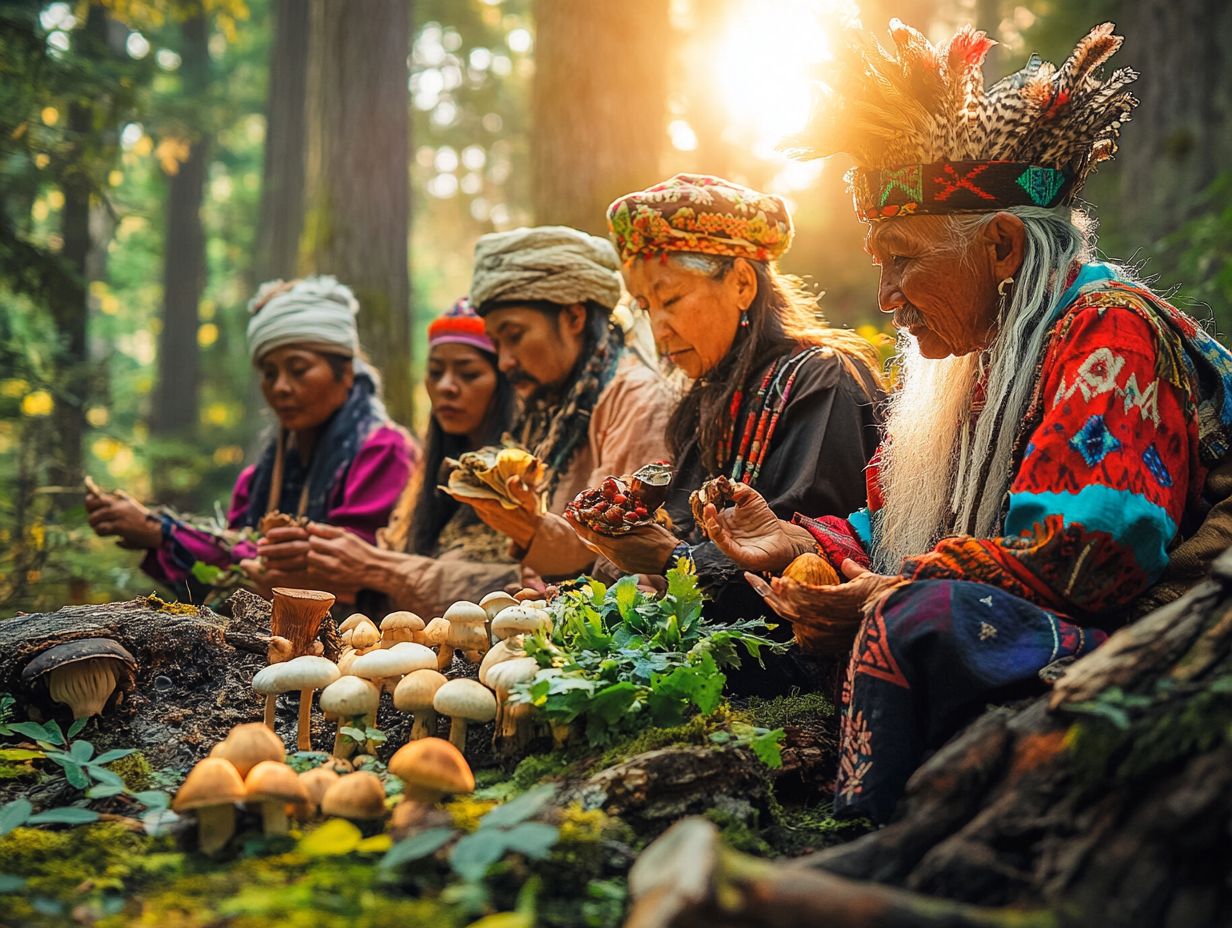
Modern foraging techniques have transformed significantly, adapting to shifting environments. These methods now integrate innovative strategies and advanced technologies to refine exploration and harvesting of edible plants and resources.
Adapting to Changing Environments
As a forager, adapting to changing environments is essential. You need to modify your techniques and behaviors to successfully locate and harvest resources.
This necessity is vividly illustrated by how specific groups, such as indigenous populations and urban foragers, change their strategies in response to seasonal changes and urbanization.
For instance, when food sources dwindle due to climate change, you might explore less-traveled areas. You may employ innovative methods like tracking animal behavior or identifying new plant species that thrive in these altered conditions.
Communities are increasingly sharing knowledge, cultivating a culture of exploration that prioritizes collaboration and the exchange of information. These adaptations not only enhance your ability to acquire resources but also strengthen community ties, making foraging a dynamic practice that thrives on your adaptability.
The Influence of Culture on Foraging Behavior
Cultural beliefs and practices significantly shape foraging behavior. They influence the strategies you use to gather food while fostering social dynamics and strengthening food bonds within your community, highlighting the role of foraging techniques in nutrition.
How Cultural Beliefs and Practices Shape Foraging
Cultural beliefs play a pivotal role in shaping your foraging practices. They influence your food identity and preferences while guiding your community s approach to resource management.
In many communities, these beliefs manifest through rituals and traditions that determine which foods are sacred or appropriate for consumption. For example, Indigenous groups often highlight a deep respect for nature, which informs their sustainable harvesting techniques and communal sharing of resources.
These social behaviors reinforce your identity as community members gather to celebrate seasonal harvests. They exchange not only food but also stories and cultural wisdom.
This connection with your ancestry and the environment helps you understand the ecosystem s balance, fostering practices that prioritize both the preservation of traditions and the sustainability of food sources.
Foraging in Different Cultures
Foraging practices differ significantly across cultures, showcasing the rich tapestry of cultural diversity and the distinct techniques influencing how individuals relate to their environment and one another. Understanding the evolution of foraging techniques can provide valuable insights into these practices.
Comparing Foraging Practices in Various Cultures
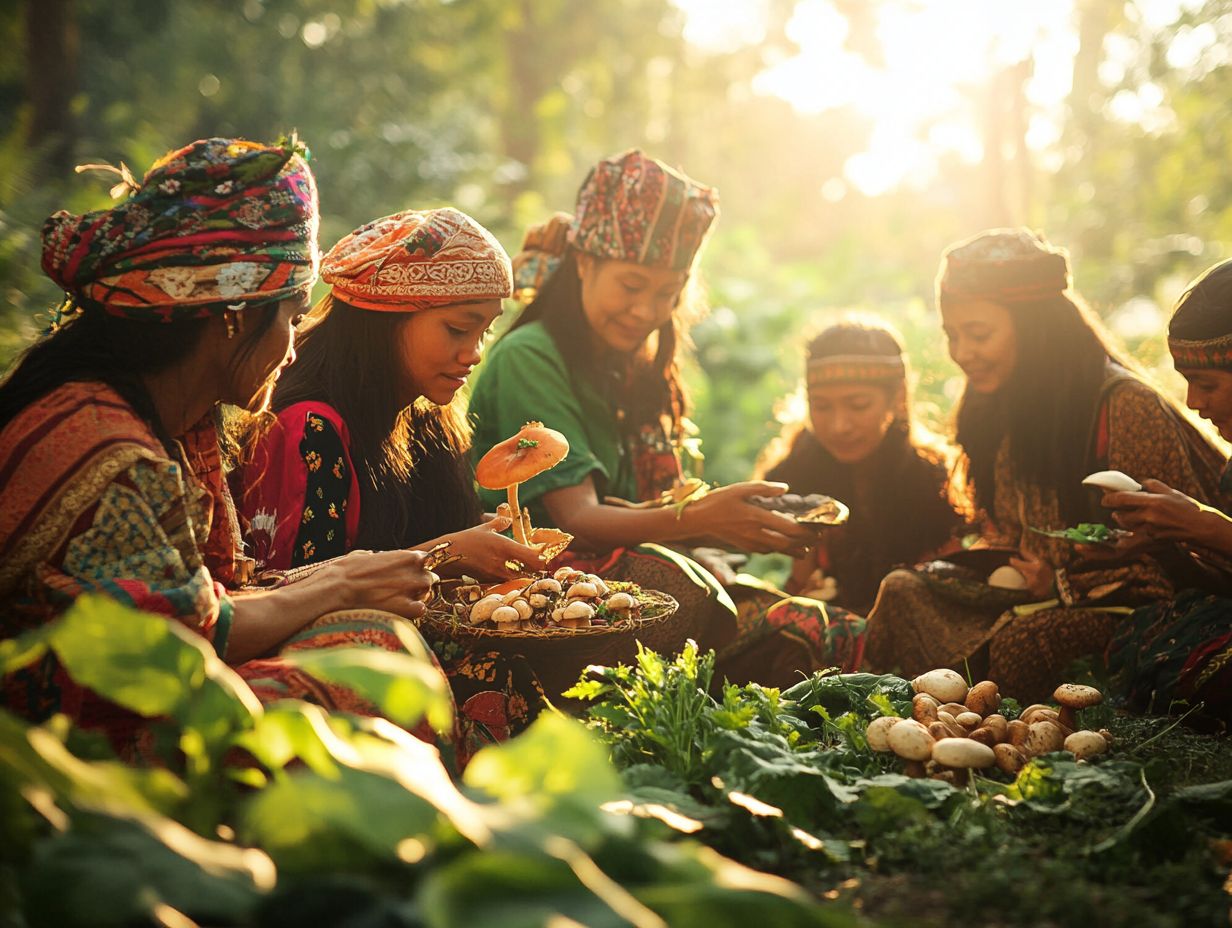
Examining foraging practices across cultures unveils the intricate ways community interactions and food preferences shape distinctive harvesting techniques. To understand these traditions further, explore what cultural practices surround foraging. These practices embody the values and traditions of the community, highlighting the profound connections individuals have with their environment.
For instance, Indigenous communities prioritize sustainable methods passed down through generations, emphasizing deep respect for nature. In contrast, urban foragers adapt their techniques, blending modern trends with diverse culinary influences stemming from a rich tapestry of multiculturalism.
Such interactions determine what is collected and influence how these foraged foods are prepared and shared, resulting in a mosaic of flavors and experiences unique to each culture. Each foraging method weaves together stories of stewardship and evolution, enriching the overall heritage of foraging, as explored in the psychology behind foraging techniques.
The Future of Foraging and Cultural Preservation
The future of foraging hinges on sustainable practices and cultural preservation as communities work to uphold their heritage while navigating emerging environmental challenges.
By embracing these principles, you can contribute to a richer understanding of the past while fostering a harmonious relationship with the natural world.
Explore local foraging opportunities or join community groups for a hands-on experience!
Sustainable Foraging and Cultural Preservation Efforts
Sustainable foraging practices are crucial for preserving culture.
They foster community engagement and promote caring for the environment among foragers.
By emphasizing the invaluable knowledge passed down through generations, these practices let you dive deep into your local ecosystems.
Community workshops and gatherings often focus on learning to identify edible plants and mushrooms. This creates a vibrant space for shared experiences that strengthen ties within your neighborhood.
Initiatives that champion responsible harvesting techniques not only protect the variety of life in an ecosystem but also enlighten you on the importance of maintaining the delicate balance between human consumption and nature s integrity. Actively engaging now ensures future generations thrive with the land’s rich offerings!
Frequently Asked Questions
What is the connection between culture and foraging techniques?
The connection between culture and foraging techniques refers to how a particular group’s cultural practices and beliefs influence the methods and strategies they use to gather food from their environment.
How does culture impact foraging techniques?
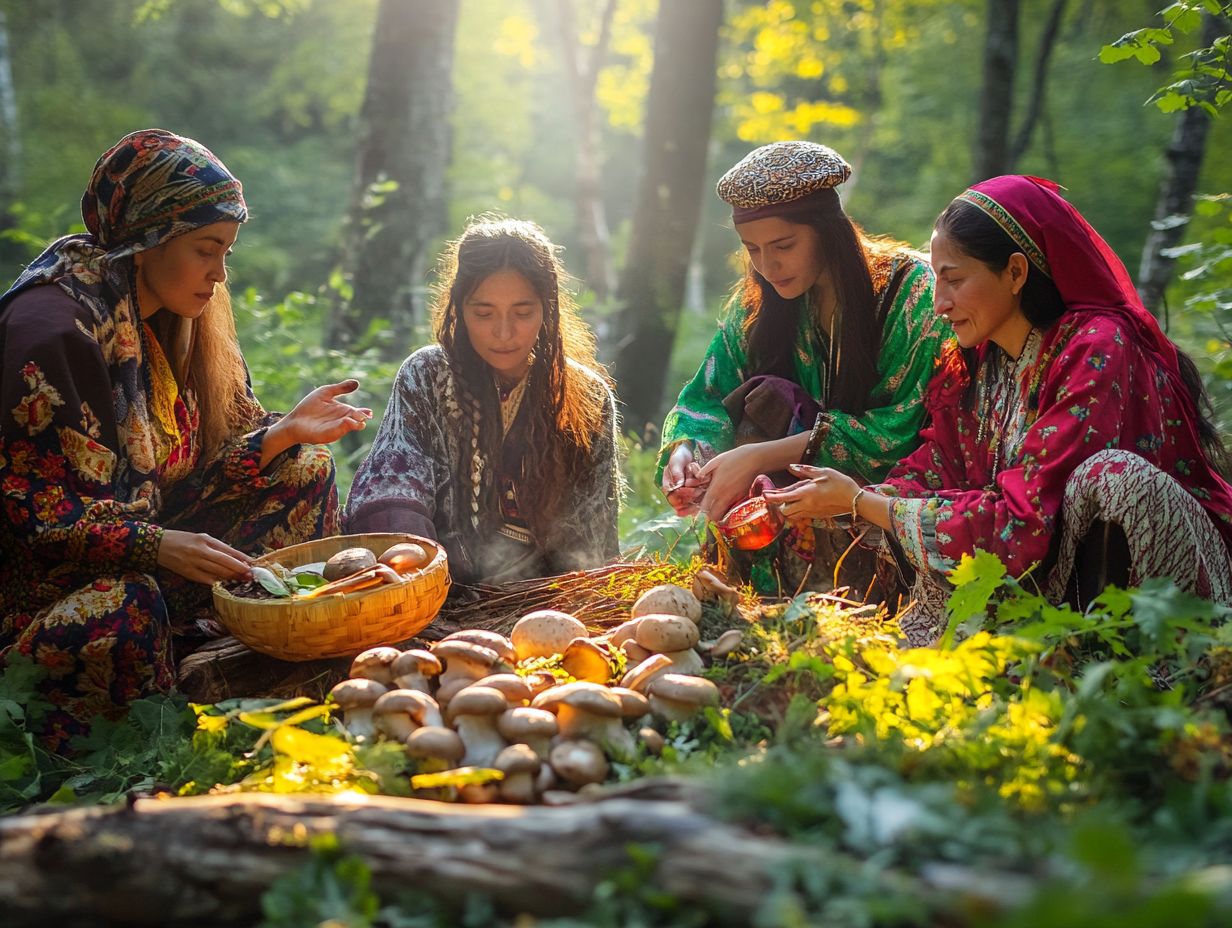
Culture shapes what foods are gathered and how they are prepared.
What role does knowledge play in foraging techniques?
Knowledge is crucial, as it is passed down through generations and shapes the methods used by a culture to gather food.
Are foraging techniques the same in all cultures?
No, foraging techniques vary among cultures, influenced by geographical location, available resources, climate, and cultural beliefs, highlighting the connection between foraging and local ecosystems.
How has modernization affected foraging techniques?
Modernization has greatly impacted foraging techniques. Traditional practices are often replaced by more efficient, industrialized methods of food production, leading to a decline in traditional foraging.
Why is understanding the connection between culture and foraging techniques important?
Understanding this connection allows for a deeper appreciation of different cultures and their relationship with the environment. It also highlights the importance of preserving the history of foraging techniques and knowledge for future generations.
Join a local foraging group today and connect with your environment!

